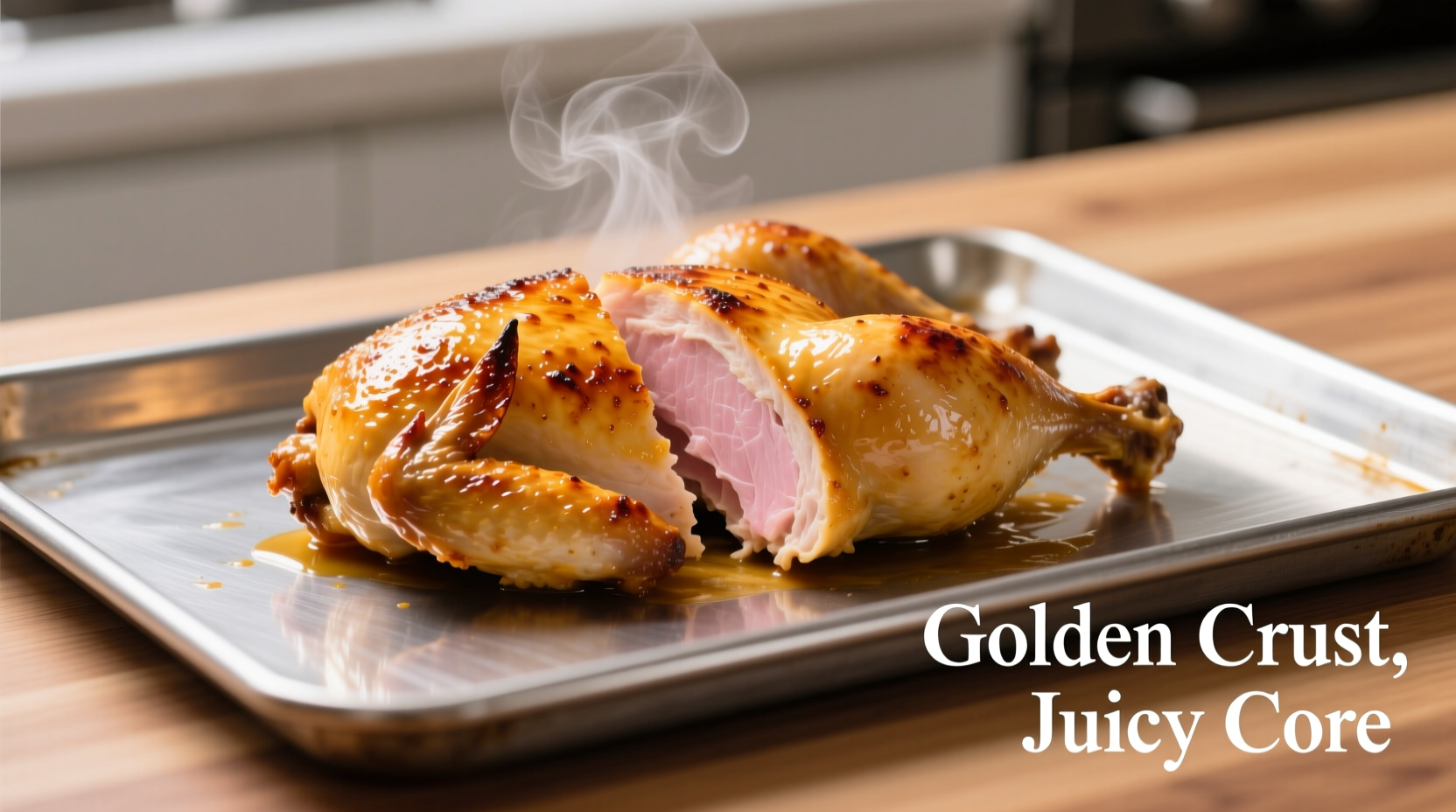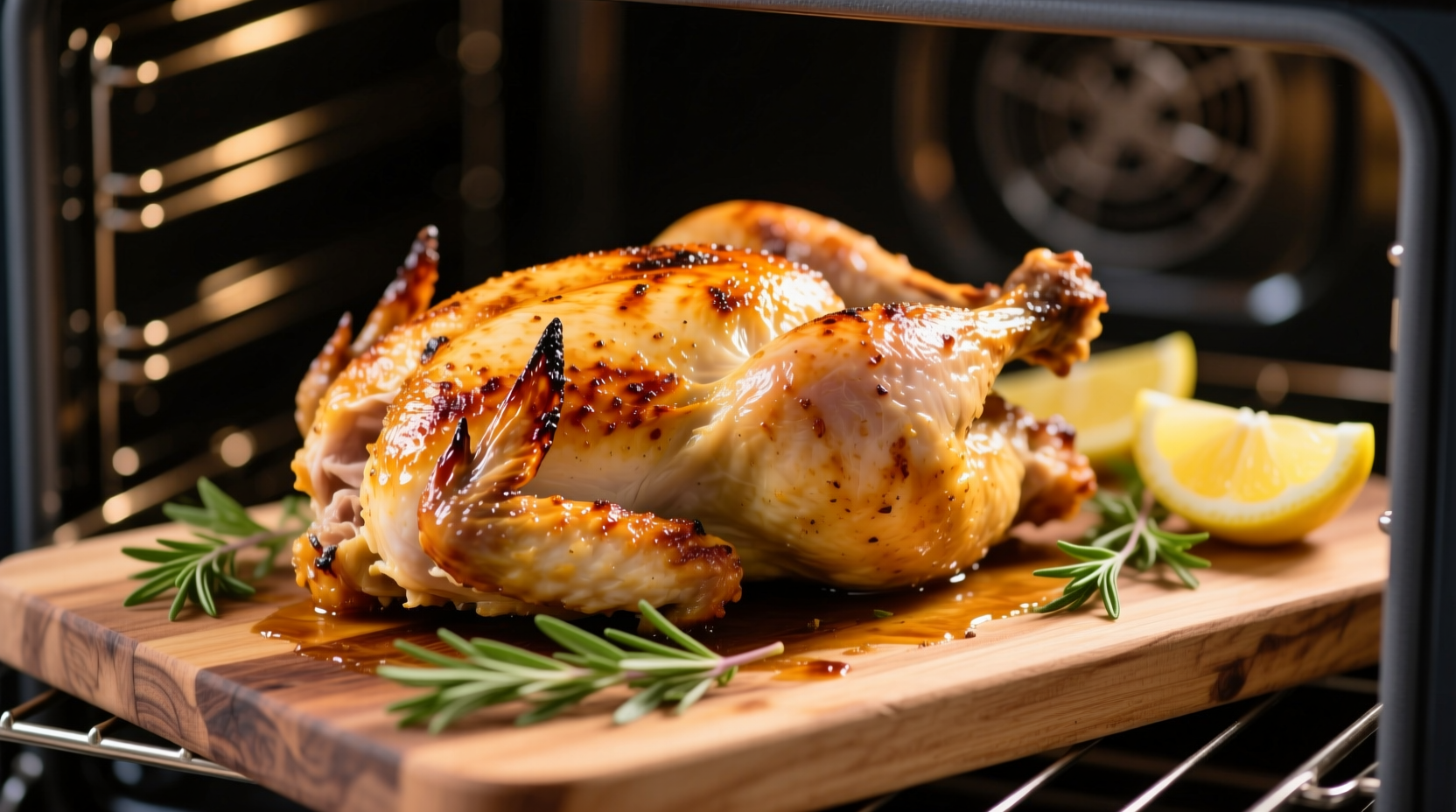The perfect oven temperature for cooking chicken breast is 375°F (190°C), and it must reach an internal temperature of 165°F (74°C) to be safely consumed. This precise temperature ensures your chicken is fully cooked while remaining juicy and tender, not dry or rubbery. Proper temperature control is critical for both food safety and optimal texture.
Getting chicken breast perfectly cooked in the oven can be challenging, but understanding the right temperature settings transforms your results from dry and disappointing to juicy and restaurant-quality. Whether you're a beginner cook or looking to refine your technique, this guide provides evidence-based temperature guidelines that guarantee safe, flavorful chicken every time.
Why Temperature Matters: Food Safety and Texture
Chicken breast requires precise temperature control for two critical reasons: food safety and texture quality. Undercooked chicken poses serious health risks from pathogens like salmonella, while overcooked chicken becomes dry and unappetizing. The USDA Food Safety and Inspection Service confirms that poultry must reach 165°F (74°C) internal temperature to eliminate harmful bacteria.
Interestingly, while 165°F is the official safety threshold, some professional chefs use lower temperatures (150-155°F) with extended resting times to achieve more tender results. However, for home cooks without precise temperature control and timing, sticking with the USDA's 165°F recommendation remains the safest approach.
| Temperature Range | Texture Result | Safety Status |
|---|---|---|
| 140-145°F (60-63°C) | Very juicy but unsafe | High risk of foodborne illness |
| 150-155°F (66-68°C) | Juicy with slight pink | Risk remains, not recommended for home cooks |
| 160-164°F (71-73°C) | Mildly juicy | Almost safe, but carryover cooking needed |
| 165°F (74°C) | Moist and safe | Fully safe per USDA standards |
| 170°F+ (77°C+) | Dry and tough | Safe but poor texture |
Step-by-Step Temperature Guide for Perfect Oven Chicken
1. Preheat Your Oven Correctly
Set your oven to 375°F (190°C) for optimal results. This temperature balances cooking speed with moisture retention. Avoid higher temperatures (400°F+) which cause the exterior to overcook before the interior reaches safe temperatures. Lower temperatures (325°F) extend cooking time unnecessarily and increase the risk of bacterial growth during the cooking process.
2. Prepare Your Chicken for Even Cooking
Pound thicker chicken breasts to an even ¾-inch thickness using a meat mallet or rolling pin. Uneven thickness causes inconsistent cooking—thinner parts dry out while thicker sections remain undercooked. Season with salt and let sit at room temperature for 15-20 minutes before cooking; this reduces cooking time variance between the surface and center.

3. Monitor Internal Temperature Accurately
Insert an instant-read thermometer into the thickest part of the chicken breast, avoiding bone or fat pockets. Check temperature during the final minutes of cooking. Remove chicken from the oven when it reaches 160°F (71°C)—the temperature will continue rising 5°F during resting (carryover cooking), reaching the safe 165°F threshold.
According to the FDA Food Code 2022 edition, this carryover cooking principle is essential for achieving safe temperatures without overcooking. Many home cooks make the mistake of removing chicken at 165°F, resulting in dry meat as the temperature continues rising off-heat.
4. Resting: The Critical Final Step
Let chicken rest for 5-10 minutes after removing from the oven. This allows juices to redistribute throughout the meat, preventing them from escaping when you cut into it. Cover loosely with foil to maintain warmth without trapping steam that could make the surface soggy.
Avoid These Common Temperature Mistakes
Mistake 1: Guessing doneness by color or texture alone. Chicken can appear white and firm before reaching safe temperatures, or retain a slight pink hue even when properly cooked. Always verify with a thermometer.
Mistake 2: Using oven temperature as your guide. Oven dials often differ from actual internal temperature. Use an oven thermometer to verify your oven's accuracy—many home ovens vary by 25°F or more from the set temperature.
Mistake 3: Not accounting for carryover cooking. Removing chicken at exactly 165°F guarantees overcooked, dry results. Factor in the 5°F temperature rise during resting for optimal juiciness.
Adjusting for Different Scenarios
Thicker cuts (1 inch or more): Reduce oven temperature to 350°F (177°C) and increase cooking time. This prevents the exterior from drying before the center reaches safe temperature.
Marinated or brined chicken: These retain moisture better, allowing slightly higher oven temperatures (up to 400°F) for crispier exteriors without drying out. Always verify internal temperature reaches 165°F.
Cooking multiple pieces: Increase cooking time by 10-15% when baking several chicken breasts together, as they affect the oven's heat circulation. Rotate the baking sheet halfway through cooking for even results.
How to Salvage Overcooked Chicken
If your chicken exceeds 170°F and becomes dry, try these fixes:
- Slice against the grain into thin strips for better texture
- Drizzle with warm broth or sauce to reintroduce moisture
- Chop and mix with mayonnaise for chicken salad
- Shred and incorporate into soups or stews where additional liquid will rehydrate the meat
Temperature Troubleshooting Guide
Problem: Chicken reaches 165°F but is still pink near bones
Solution: This is normal with younger chickens—the pigment in bones can leach into surrounding tissue. As long as the internal temperature hits 165°F, it's safe to eat.
Problem: Chicken exterior is browning too quickly
Solution: Reduce oven temperature by 25°F and tent with foil to slow surface cooking while the interior continues heating.
Problem: Chicken takes much longer than expected to reach temperature
Solution: Verify your oven's actual temperature with an oven thermometer. Many home ovens run cooler than indicated, especially when first preheated.











 浙公网安备
33010002000092号
浙公网安备
33010002000092号 浙B2-20120091-4
浙B2-20120091-4